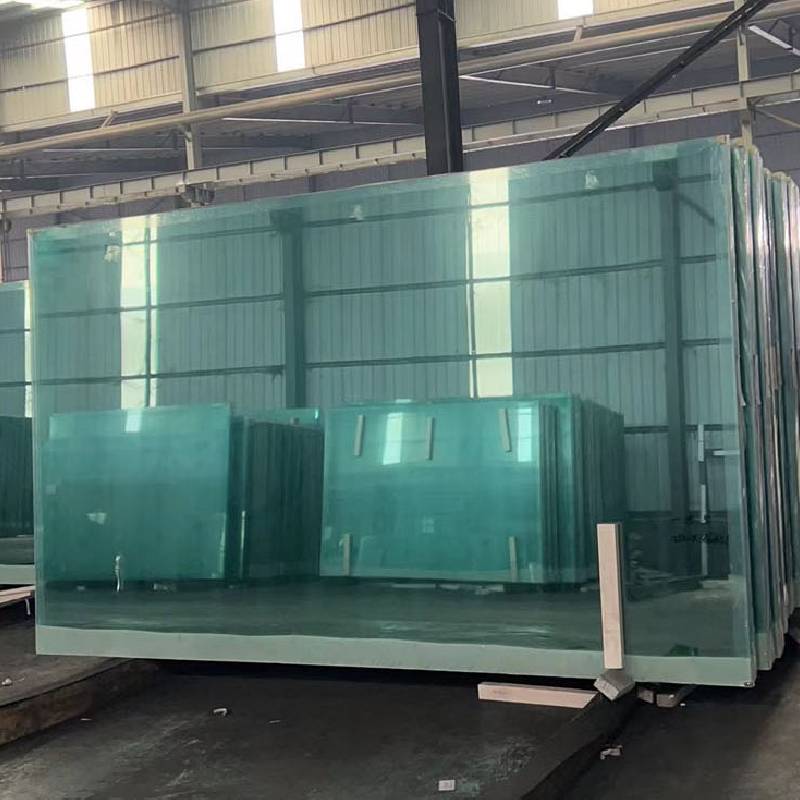The SaPace A New Era in Glass Architecture Design
In recent years, glass architecture has emerged as a compelling way of redefining our physical spaces. The aesthetic and functional possibilities of glass in architectural design have pushed boundaries, creating structures that are not only visually stunning but also environmentally responsive. The integration of glass into building designs offers unique benefits, ranging from enhancing natural light to offering unobstructed views, ultimately changing how we interact with our environment.
The SaPace A New Era in Glass Architecture Design
Moreover, glass architecture promotes transparency and connectivity. Buildings designed with expansive glass surfaces create a sense of openness that can dissolve the boundaries between indoor and outdoor environments. This fosters a feeling of community and encourages interaction. For instance, museums and galleries that employ glass walls can invite onlookers to engage with the exhibition spaces from outside, sparking curiosity and drawing visitors in.
glass architecture design
Another important aspect of glass architecture is its innovative potential in sustainability. With advancements in technology, modern glass can be equipped with energy-efficient coatings, solar control systems, and even smart technologies that regulate temperature and lighting based on environmental conditions. These innovations facilitate sustainable building practices, allowing for reduced energy consumption and a lower carbon footprint. As architects become more aware of their ecological impact, glass is increasingly seen as a sustainable choice when designed and utilized thoughtfully.
Incorporating glass into architectural design, however, does come with challenges, particularly concerning privacy and heat control. Architects must skillfully balance transparency with the need for privacy in residential and commercial designs. Thankfully, a range of solutions exists, including frosted glass, smart glass that changes opacity, and strategic landscaping that provides natural barriers without compromising aesthetics.
Looking ahead, glass architecture is poised to continue influencing the future of design, melding art with science to create spaces that inspire and engage. As technology evolves and our understanding of environmental stewardship matures, glass will undoubtedly play a pivotal role in crafting the skylines of tomorrow. With its beauty, functionality, and sustainability, glass architecture stands at the forefront of contemporary design, making it an exhilarating frontier to explore.
 Afrikaans
Afrikaans  Albanian
Albanian  Amharic
Amharic  Arabic
Arabic  Armenian
Armenian  Azerbaijani
Azerbaijani  Basque
Basque  Belarusian
Belarusian  Bengali
Bengali  Bosnian
Bosnian  Bulgarian
Bulgarian  Catalan
Catalan  Cebuano
Cebuano  Corsican
Corsican  Croatian
Croatian  Czech
Czech  Danish
Danish  Dutch
Dutch  English
English  Esperanto
Esperanto  Estonian
Estonian  Finnish
Finnish  French
French  Frisian
Frisian  Galician
Galician  Georgian
Georgian  German
German  Greek
Greek  Gujarati
Gujarati  Haitian Creole
Haitian Creole  hausa
hausa  hawaiian
hawaiian  Hebrew
Hebrew  Hindi
Hindi  Miao
Miao  Hungarian
Hungarian  Icelandic
Icelandic  igbo
igbo  Indonesian
Indonesian  irish
irish  Italian
Italian  Japanese
Japanese  Javanese
Javanese  Kannada
Kannada  kazakh
kazakh  Khmer
Khmer  Rwandese
Rwandese  Korean
Korean  Kurdish
Kurdish  Kyrgyz
Kyrgyz  Lao
Lao  Latin
Latin  Latvian
Latvian  Lithuanian
Lithuanian  Luxembourgish
Luxembourgish  Macedonian
Macedonian  Malgashi
Malgashi  Malay
Malay  Malayalam
Malayalam  Maltese
Maltese  Maori
Maori  Marathi
Marathi  Mongolian
Mongolian  Myanmar
Myanmar  Nepali
Nepali  Norwegian
Norwegian  Norwegian
Norwegian  Occitan
Occitan  Pashto
Pashto  Persian
Persian  Polish
Polish  Portuguese
Portuguese  Punjabi
Punjabi  Romanian
Romanian  Russian
Russian  Samoan
Samoan  Scottish Gaelic
Scottish Gaelic  Serbian
Serbian  Sesotho
Sesotho  Shona
Shona  Sindhi
Sindhi  Sinhala
Sinhala  Slovak
Slovak  Slovenian
Slovenian  Somali
Somali  Spanish
Spanish  Sundanese
Sundanese  Swahili
Swahili  Swedish
Swedish  Tagalog
Tagalog  Tajik
Tajik  Tamil
Tamil  Tatar
Tatar  Telugu
Telugu  Thai
Thai  Turkish
Turkish  Turkmen
Turkmen  Ukrainian
Ukrainian  Urdu
Urdu  Uighur
Uighur  Uzbek
Uzbek  Vietnamese
Vietnamese  Welsh
Welsh  Bantu
Bantu  Yiddish
Yiddish  Yoruba
Yoruba  Zulu
Zulu 

